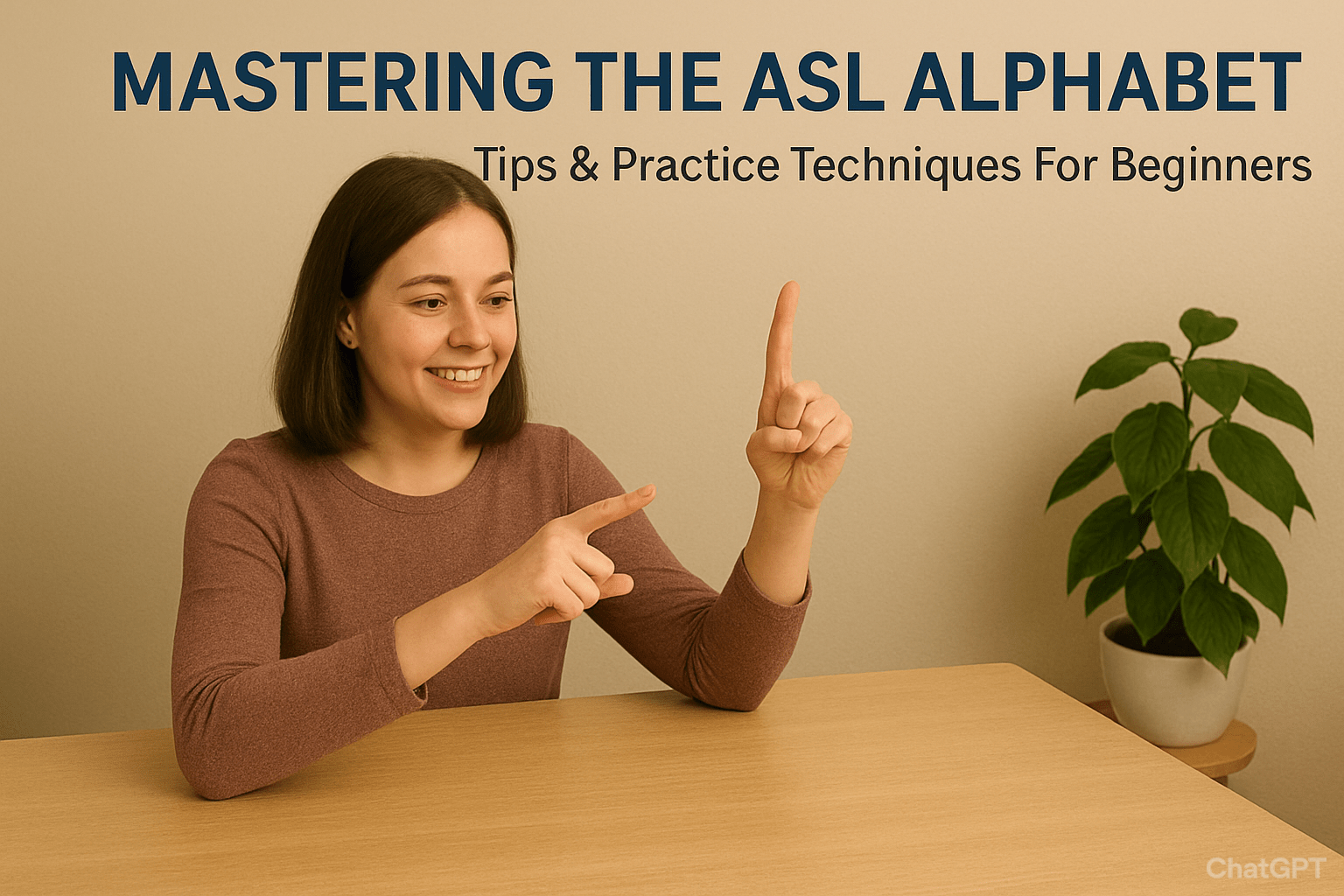Learning sign language can feel overwhelming at first — there are hundreds of signs, regional variations, and expressive techniques to master. But what if you had a single, easy-to-use tool that helped you learn signs visually, naturally, and at your own pace?
That’s exactly what the Sign Dictionary at SignAcademy.org is built for — to make learning sign language faster, simpler, and more intuitive.
In this guide, we’ll walk you through how to use the Sign Dictionary effectively, along with daily practice tips to help you build fluency faster.
🔍 1. What Is the Sign Dictionary?
The Sign Academy Sign Dictionary is an online, video-based resource that helps you look up words and see how they’re signed in real time. Instead of static images or written descriptions, each entry shows a short video clip demonstrating the correct hand shape, movement, and facial expression.
It’s available for multiple sign languages, including:
- Indian Sign Language (ISL)
- American Sign Language (ASL)
- and other regional sign languages as they are added over time.
Unlike most sign language apps, Sign Academy’s dictionary uses publicly available educational videos, carefully curated for accuracy and clarity. This gives you access to real, community-based signing — not just textbook examples.
🧭 2. How to Navigate the Sign Dictionary
If you’re new to the site, here’s how to get started:
- Go to: SignAcademy.org → Sign Dictionary
- Use the search bar at the top — simply type the word you want to learn, such as “water,” “friend,” or “school.”
- Each word brings up a short embedded video showing the sign in action.
- You’ll also see related terms and categories (like anatomy, food, greetings), so you can explore connected vocabulary without leaving the page.
💡 Tip: Bookmark the dictionary on your phone or desktop for quick daily reference — it’s perfect for a few minutes of practice anytime, anywhere.
📚 3. Why Video-Based Learning Works Best
Studies show that visual repetition and real-time motion help learners retain new signs faster. Seeing signs performed in context — with expression, rhythm, and speed — builds a stronger mental connection than memorizing static hand diagrams.
That’s why the Sign Dictionary’s video format is so powerful. It allows you to:
- Observe natural hand movement and rhythm
- Understand how facial expressions add meaning
- Learn context — how one sign can change based on usage
This immersive visual approach mirrors how native signers communicate, helping you pick up both accuracy and fluency naturally.
🧩 4. How to Use the Sign Dictionary in Daily Practice
The real secret to mastering sign language is consistency. Here’s how to make the most of the Sign Dictionary in your daily routine:
🕒 Morning Routine – 5-Minute Sign Sprint
Start your day by learning three new signs. Search words related to what you’ll do that day — like coffee, meeting, friend, work, or study.
📓 Create a Personal Sign Journal
Write down each new sign you learn and include a small drawing or note about the motion or emotion behind it. This strengthens memory through repetition.
📱 Practice Throughout the Day
When you think of a word, look it up in the dictionary instead of guessing. Over time, this habit builds your sign vocabulary effortlessly.
🗣️ End of Day Review
Watch the same three signs again before bed — visual repetition helps reinforce muscle memory and recall.
🎯 5. Tips for Faster Learning
Here are a few extra ways to speed up your progress using SignAcademy’s tools:
✅ Focus on themes. Learn signs by topic (like food, emotions, or travel) — this improves recall and helps you use words in context.
✅ Combine with other learning tools. Pair dictionary use with blog lessons like Essential Signs You Should Know and Conversational Phrases in Sign Language.
✅ Observe the signer’s face. Expressions aren’t optional — they’re part of the grammar!
✅ Record yourself. Use your phone to mimic the signer’s pace and movement. Compare your signing to the video for self-correction.
✅ Stay curious. If you encounter a new word in conversation or online, head straight to the dictionary and look it up.
🌍 6. Building Connection Through Consistency
The more you use the Sign Dictionary, the more natural signing becomes. It’s like having a friendly tutor always available — patient, visual, and endlessly replayable.
Over time, you’ll notice that you start thinking in signs, not words. You’ll remember expressions, hand motions, and space usage intuitively. That’s when you know you’re not just studying sign language — you’re living it.
💬 7. Why Learners Love the SignAcademy Dictionary
Users often describe the SignAcademy dictionary as a “visual encyclopedia of signs.” It’s not just practical — it’s also community-driven, featuring real people sharing their knowledge.
Plus, because it’s constantly updated, you’re always learning from current, reliable sources.
🧩 Conclusion
The SignAcademy Sign Dictionary is your go-to resource for fast, accurate, and enjoyable sign learning. Whether you’re a beginner memorizing basic words or an advanced learner refining your expression, it helps you build a real-world connection with every search.
So the next time you wonder, “How do I sign that?”, head over to SignAcademy.org — your signing journey just got a whole lot easier.


